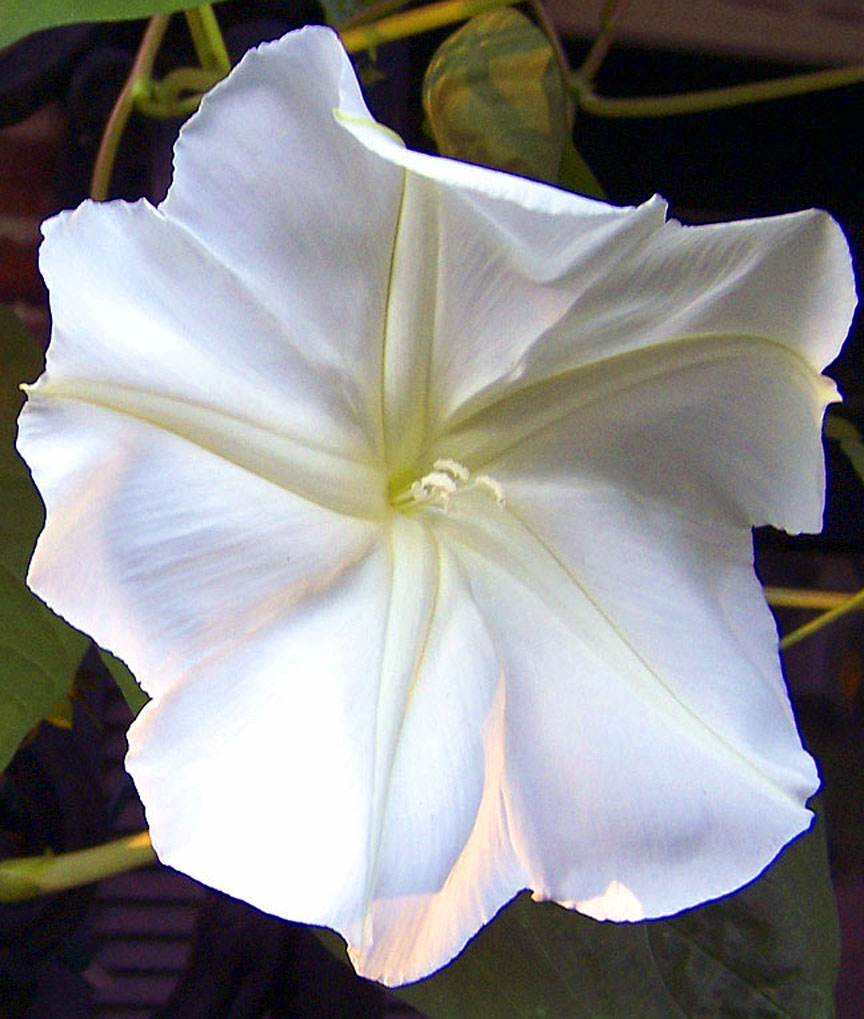October Moonflower
Lauderdale Peaches
Cotton Seeds
Washing Tomatoes
Purple Moon
Washington’s Walnut
Greenwood: A Resting Place Downtown
There’s a green place in the heart of Jackson where roses bloom and a Summer House rests beneath the city skyline, a place to have a quiet lunch, a leisurely walk and a chance to recharge batteries during another day at the office. You won’t be disturbed; those many around you there lived their lives to fruition years ago. You will be in a place to contemplate your own life and expectations in Greenwood.

The cemetery itself, part of a federal land grant which also established the City of Jackson as the official site of the Capitol of Mississippi on November 21, 1821, was formally designated by an act of the State Legislature effective January 1, 1823. The original six acres were known simply as the “graveyard” and later as the “City Cemetery”. Some referred to it as the “burying ground”. An early map (1822) showed the area west of what is now West Street as vacant land indicating that originally the cemetery, while in Jackson’s original plan, was not yet officially within the city limits. The cemetery is shown on an 1845 Jackson map as the Grave Yard, encompassing 11.8 acres. The future extension to its present size is shown in squares 6N, 9.64 acres and 7N, 9.77 acres on this map. Its formal designation as Greenwood Cemetery was adopted in 1899, and it was listed on the National Register of Historical Places as a Mississippi landmark in 1984.

“There were no sections for any group,” Cecile Wardlaw, executive director of the cemetery Association says. “Many old cemeteries were divided into sections by race or religion. Greenwood never was. Catholic, Protestant, or atheist, black or white; everybody just got buried. ‘Born in Ireland’ appears on many of the oldest stones.”
Time well spent with Mrs. Wardlaw and Mr. Miazza in May 2013, provided a wealth of information on the early days and development of the cemetery. “There are 330 unmarked graves at the original south end of the cemetery,” Mrs. Wardlaw related, “with the estimated number of all graves today being 5,000.” The oldest known surviving marker with a date is Governor Abram Marshall Scott who died June 12, 1833. There are an estimated 2,200 monuments posted on the Find A Grave website and Jacksonian Linda Robertson is in the process of doing a monument survey.

The city owns the cemetery, but much of the maintenance is done by the Greenwood Cemetery Association which also raises funds to repair and perform landscaping work. Volunteers in this organization have provided more than 600 hours of service since the beginning of 2013. They have been aided by local Boy Scouts, AmeriCorps and the Phi Theta Kappa honorary fraternity at Mississippi College. Boy Scout Troop No. 1 (St. James and St. Andrews Episcopal Churches), performed volunteer work at the cemetery during the spring. The Brookhaven Monument Company is the primary source of stone repairs. The old section (south end) of the cemetery was not plotted since the “burial ground” was not officially a part of the city when first put to use. As the cemetery expanded northward, surveyors had difficulty putting in roads since bodies were buried haphazardly rather than in organized rows.
A number of Jackson’s first families have been interred in Greenwood Cemetery. Marion Dunbar, first pastor of Mt. Helm Baptist Church, is there. It was named Helm because Thomas Helm contributed the lot for the church to be built and also gave the church some money to help with construction. According to its website, Mt. Helm, Jackson’s oldest African American church, began in 1835, with several enslaved African Americans who worshiped in the basement of the First Baptist Church. It became a separate body in 1867, the year the 13th Amendment was ratified. A modern version of the church structure may be seen today at 300 E. Church Street near the west side of the cemetery.
Other Jacksonians of note include Millsaps College founders Col. William Nugent, Bishop Charles Betts Galloway, and Dr. William Belton Murrah, who served as the college’s first president; Dr. Lewis Fitzhugh, first president of Belhaven University and father-in-law of Dr. Murrah; founders of the Baptist Hospital, Harley R. Shands, M.D., and John Farrar Hunter, M.D., and Rev. John Hunter, pastor of First Presbyterian Church (1858).
In addition to Miss Welty (d.2001), other Belhaven residents buried in Greenwood Cemetery include Henry Muller Addkison, local hardware dealer (d.1974), Lawrence Saunders (more on him later), R.H. Henry, owner and publisher of the Daily Clarion and Clarion-Ledger (d.1891), and James H. Boyd (d.1882). Boyd, the owner of what is now The Oaks home on North Jefferson Street, was a former mayor of the city and his home was the site of the conception of Mississippi’s first “Decoration Day”, which became known nationally as Memorial Day.

Monuments range from barely noticeable to imposing. In the circle by the cemetery’s Summer House, is the monument of Rev. Amos Cleaver, an Episcopal priest, who died in October 1853 from yellow fever. Five years after his death, some women took up money for this monument. The exact location of his grave is unknown so his marker was placed where it is today. The widow Cleaver had a girl’s school in a frame building where St. Andrews Episcopal Church stands today at S. West and E. Capitol Streets. In 1854, she sold the school to the state for its first school for the deaf. There is also the “Weeping Lady” (Sarah Ann and George Lemon plot), the Hilzheim lot framing structure, which looks like a church, and the “Angel Tombstone” in the Poindexter lot.
Perhaps the most interesting monuments have stories associated with their namesakes. What’s in a name? We shall soon see.
The Saunders Stone
Lawrence Saunders was a professor at the deaf school which was then across the street from his mother’s house near Barksdale and North State Streets. On Christmas night in 1895, he dressed as Mrs. Santa Claus to entertain the students. Saunders was on his way to the school and stopped by his mother’s home to show her his costume but the front door was locked. He let himself in through the back gallery. The only person home was his nephew who awoke to discover a strange presence. He shouted “Stop or I’ll shoot.” Unfortunately, Lawrence, being deaf, did not hear the warning and was killed by his own kinsman. It is never good when you shoot Santa Claus.
The Little Dog Tombstone

The Good Samaritan Monument
Dr. Samuel Cartwright was well known for his work and writings to control the great Yellow Fever and cholera epidemics. During the Civil War, he was charged with getting rid of dysentery in the Confederate military camps, but he contracted dysentery himself and died in 1863. The carving of the “Good Samaritan” on his tombstone attests to his sacrifice and may be seen on his marker today.
My Dog Skip
A movie scene, filmed in Greenwood Cemetery, was based on Willie Morris’ 2000 novel My Dog Skip, and represented the witches’ tomb in the Yazoo City Cemetery. It depicted one of the characters going out among the tombstone to sit down and drink booze. Also, a replica of the Helm mausoleum was constructed for the movie in which the bootleggers stored their moonshine. There is no written record, however, of these spirits raising other spirits or sharing their company for the evening.
Lorian Hemingway’s Ghosts
The granddaughter of novelist Ernest Hemingway came to Jackson in 1999 to write an article on the 1966 Candlestick Park tornado. While here she participated in a ghost tour in Greenwood Cemetery, which was conducted and scripted by Jo Barksdale, much to the delight of a number of children.
The Tallest Monument

Early Jackson family descendent Peter Miazza says “If you want to take a short tour to visually observe evidence of the history of Jackson and the leading citizens of the State of Mississippi, there is no better place to learn than Greenwood Cemetery.”
They are all here, diverse in their lifetime but equal in the eyes of God. Within the 22 acres of monuments and memories lie those who preceded this day, and share its common ground. There are the wealthy and the pauper, the slave and his master, the business owner and his clerk, the patriarch and the child. There are the physicians, the barristers, the judges, the politicians, the writers and artists, the entrepreneurs and the indigents. There are the prominent with their success and their secrets. There are the unnamed and the unknown. There are the wretched and the rascals and the Good Samarian and the faithful dog. There is Everyman. As Albert Einstein once said “Before God we are equally wise and equally foolish.”
As you walk the paths of Greenwood Cemetery, contemplate the rose shaded spirits around you. Feel their presence. You, like them, are part of our city’s heritage and its destiny. While our own lives are but a flash of light in the darkness of creation- a short string, the deeds of those who sleep around us endure forever. It is one final reminder that beauty is at our fingertips and that we are not alone.
Bill & Nan Harvey: June 2013; revised January 2015
Copyright © Bill and Nan Harvey
Sources and suggestions for more information:
Most of the material in this article was obtained from an interview with Greenwood Cemetery Association Executive Director Cecile Wardlaw and board member Peter Miazza on May 9, 2013. Other sources include:
1) Greenwood Cemetery brochure
2) Wikipedia Encyclopedia
3) Walt Grayson’s Look around Mississippi (WLBT-TV, 4/24/12; 12/26/12)
4) Jackson, A Special Place by Carroll Brinson (1977) P. 49 (map)
5) Mt. Helm Baptist Church website
Interested readers might also wish to consult:
* www.greenwoodcemeteryjackson.org
* Find-A-Grave website
* The Old Cemeteries of Hinds County (1811-1988) by Mary Collins Landin









